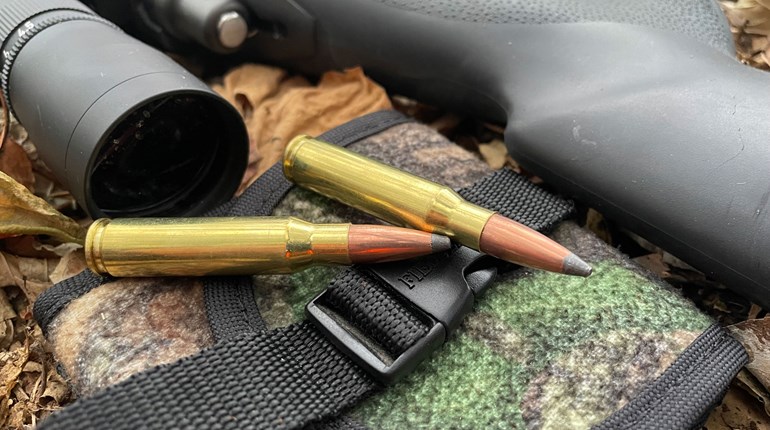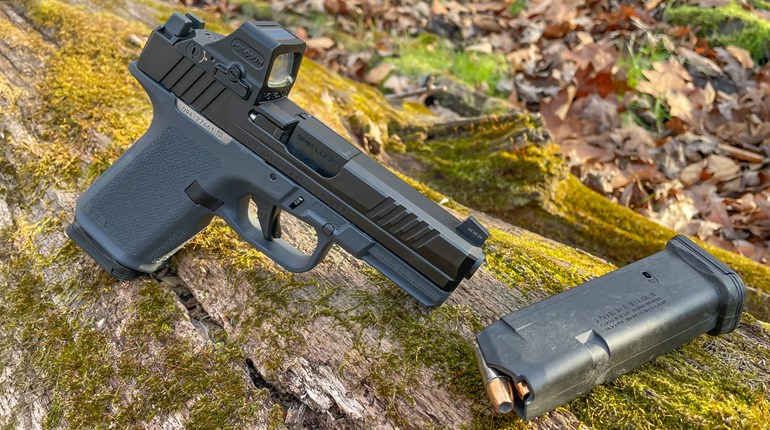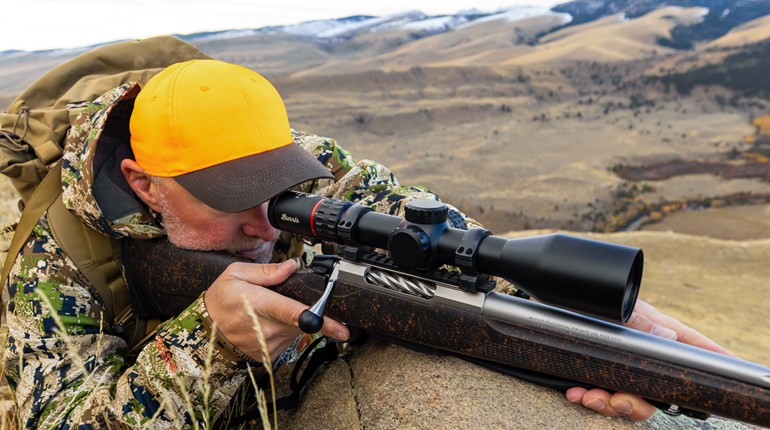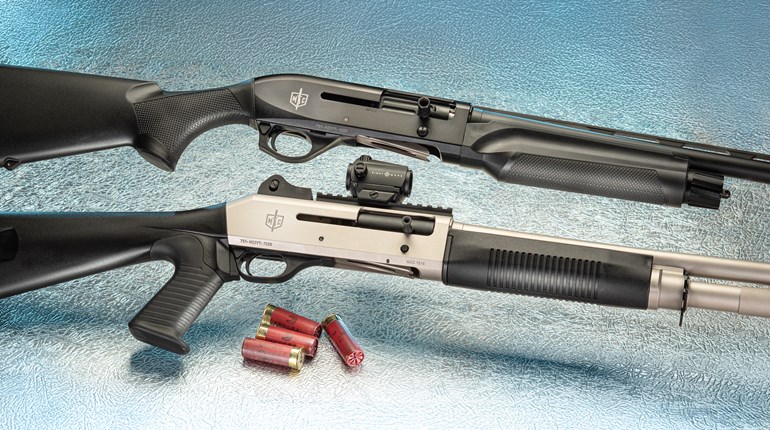
“Shopping secondhand isn’t a sacrifice; it’s your ticket to the good life.” This axiom, uttered by newscaster and author Nicole Lapin, is applicable to many products—particularly fine over/under shotguns. And, perhaps more importantly, it’s accurate.
In the simplest terms, a firearm is a tool designed to fulfill a task (or multiple duties). As with any other type of apparatus—be it a wrench, level, hammer, drill or saw—purchasing a shotgun constitutes an investment. The prudent purchaser not only wants the best instrument for the undertaking, but also one that is long-lasting and reliable, in addition to holding—or increasing—its value. Those virtues won’t be found in utilitarian, economy stacked barrels that have flooded the market recently; the alternative, however, the mid- to top-tier over/under shotguns, are pricey.
Fortunately, the secondhand market is rife with high-quality over/unders that can be had at a substantial savings. They’re not inexpensive, and could require much sacrifice to attain. But, as interior designer Miles Redd pined, “Buy the best and you only cry once.” You’ll never regret investing in quality. The opposite holds true, too.
Discerning a gemstone from veritable scat isn’t easy. It takes a discerning eye and knowledge, the latter of which you’ll learn in this article. But, before delving into distinguishable characteristics—desirable and detrimental—of a prime over/under shotgun, I first—and briefly—want to discuss the merits of the action type.

Over/Under Attributes—A Brief Overview
When it comes to wingshooting, over/under shotguns are vastly outnumbered by pump-actions and semi-automatics. This is primarily due to cost and the lack of a third shot, which is viewed as a handicap. The advantages of the stacked-barrel, however, outweigh the aforementioned drawbacks. Let’s begin with length and maneuverability.
Since over/under shotguns don’t rely on reciprocating parts like pumps and autoloaders, they can be fitted with lengthier barrels—for a longer sight plane—and yet are still easier to move in tight spaces—such as a blind (stationary, layout or floating) or when in thick brush. What’s more, with few moving parts they are utterly reliable. Should the gun experience malfunctions in one barrel, the selector can switched to the unaffected barrel until the hunt ends. Sure, the result is an oversized single-shot, but unlike with defective single-barreled guns, you’re still in the game.

Personally, I typically outfit the barrels of my over/unders with extended choke tubes featuring different constrictions—something the single-barreled shotgun is incapable of. Why? The best pattern for the shot at hand can be selected. For instance, if you’re the “blocker” on a pheasant drive, you can expect the first shot to be taken at a greater distance than the second; therefore, a full, improved-modified or modified choke could be paired with a modified, light-modified or improved-cylinder. Conversely, for hunting flushing pheasants behind pointers, the more-open choke would be employed first. The chokes could be paired with distinctive loads.

Lastly, the attention to detail is amply evident in choice over/under shotguns. In general, the characteristics of the trigger—pull weight, travel, etc.—are superior to that of other shotgun types, as are overall fit and finish. It’s the sum of the features outlined above that endear over/unders to wingshooters.

Selecting a Worthwhile Specimen
Before oohing and aahing over any shiny, stacked-barrel shotgun, let’s narrow the field to those that deserve it. The highest-quality guns come from about two handfuls of companies, and in competition circles they’re referred to as “B” (Beretta, Browning, Blaser, and Benelli) and “K” (Krieghoff) guns, though Perazzi, Rizzini, Zoli, FAIR, Caesar Guerini, Longthorne, and FABARM are of equal—if not better, in some cases—quality. The aforementioned makers manufacture shotguns that are resilient, reliable, striking and maintain their value over time—if not appreciate.

Don’t believe me? See what over/unders the top-tier competitors in sporting clays, FITASC, skeet and trap are using, and you’ll note a trend. When the difference between earning cash prizes, endorsements and the euphoria of success, and going home emptyhanded and defeated is one lost clay target, only the best will do. You should expect the same for your hard-earned time afield. After all, what are your time and potential memories worth?
Granted, some of the brands I mentioned are ridiculously priced, but that’s due to what their manufacture entails. Watch YouTube videos of factory tours at Beretta and Krieghoff, for example, to see about which I write. The quality of the materials, lengthy list of features and meticulous craftmanship all add to the cost.

Once you find a shotgun meeting the criteria thus far, pick it up (if not shopping online). Does it fit you? If not, fine guns can often be fitted with a new stock or the existing one can be modified, but that’ll raise the overall cost. Ensure that it has the ability to digest 3” shells—if in 12- or 20-gauge—otherwise you’re limiting yourself.
Competition-quality over/unders can pull-double duty for wingshooting, so don’t discount them. Guns designed for clays courses are built to withstand the firing of tens or hundreds of thousands, if not a million, shells and also tend to have features specific to the games for which they’ll be employed; this can include lengthier barrels (32- or 34-inches), higher-than-normal ribs, full pistol grip, etc. But, that doesn’t mean they won’t work or be customized. Most of the makers previously mentioned build dedicated hunting guns as well.

For wingshooting, and particularly where minimal walking is involved, lengthy tubes aren’t a hindrance; in fact, the increased sighting planes that are beneficial for dusting distant clays will help down gamebirds as well. For most pursuits, however, 26- or 28-inch barrels are preferable, though the 30 inch will work. Barrel porting reduces muzzle flip, but the tradeoffs are increased report and diverted gases beating bystanders. Perceived recoil can be lessened.

Some competition-quality over/unders have an adjustable or replaceable ventilated barrel rib, and at times they are exaggeratedly tall for use on the trap field. The latter isn’t conducive to most wingshooting. Ideally, you want a flat or slightly elevated rib with a 50/50 or 60/40 point of impact, and the ability to change choke tubes is a plus. Chrome-lined barrels are standard nowadays, as are improved—usually lengthened—forcing cones. Backboring is also widespread, yet not universal. Is it critical? No, but it won’t hurt anything, either.

When inspecting the barrels, first ensure that brazing and welds, if present, aren’t broken or cracked (even tiny cracks can be a problem). The rib should have no play, and note if the bead(s) are present; oftentimes, the bead mid-length backs out and is lost. It’s an easy fix. Note patches of missing bluing or rust, or freckling. Wherever perspiration frequently contacts the metal (usually near the muzzle or on the receiver, depending on how it’s held), expect increased frequency of missing bluing, discoloration and rust. These can indicate substantial use and/or improper/inadequate maintenance. It can also be caused by exposure to salt and brackish water. Unless heinous, though, they’re not dealbreakers.

Next, remove the choke tubes. Like checking the oil on a used automobile, this process can tell you a lot about the cleaning regimen—or lack thereof—of the previous owner. The tubes should be easily withdrawn, with grease or other anti-seize lubricant generously applied to the threads and devoid of carbon/fouling both inside and out. Excessively dirty and seized choke tubes indicate laziness and abuse. That raises red flags for me.

Once the barrel set has been removed from the shotgun, on the breech or chamber end, glance at the chambers and the length of the bore to ensure they are free of rust and scoring. A mirror-like finish is expected. At this point, check the extractors/ejectors for lubrication and any inconsistencies. Once the shotgun is reassembled, these can be tested by dryfiring—after confirming the gun is unloaded—in a safe direction, then opening the action.

On the receiver, I immediately note the at-rest position of the top lever. On most premium over/unders, the top lever should be positioned to the right—for right-hand variants—of center. If it’s aligned with the center of the top strap or tang, it’s likely undergone heavy usage and/or wear. Further evidence can be found in lockup, which must be tight; there should be no play. Many top-tier over/unders can be rebuilt—a real benefit and why they’re an investment—but it will be expensive. You don’t want to spend heavily on a shotgun that immediately needs to be serviced.

Next, manipulate the barrel selector and safety. Are they functioning as designed? If not, that’s a problem. Now view the breech face. Is it disfigured? If yes, that only comes from extensive firing. Some can be replaced, others cannot. Also pay close attention to the condition of the firing pins. Are they misshapen or rounded? The former can pierce primers or produce light primer strikes, which can excessively foul the firing pin channel or fail to fire the shell, respectively. These can be replaced.

As an owner of a Browning CXS and a former owner of a Citori 725 Pro Sporting, I’ve had to exchange firing pins on multiple occasions—especially for the lower barrel. Doing so isn’t onerous or expensive, but it’s something that must be accounted for. Brownings are not alone in this; any time you’re expending thousands, if not tens of thousands of shells per year, you can expect deterioration. I’d recommend new firing pins and springs, regardless of the secondhand shotgun that you purchase. Pore over all surfaces—including the full-width hinge pin or other design—where metal contacts metal. Scratches or gouges indicate lack of lubrication and/or use/abuse.

As for the buttstock, don’t get too caught up in the condition of wood—unless you’re guided by aesthetics (as many competitors are) or believe the pursued birds will dislike the light handling marks. All kidding aside, unless there are abundant deep scratches, dents or gouges, which represent negligence or maltreatment, there should be no issues. Obviously, there should be no cracks of any size. These are generally found in the tang area and near the trigger guard. Avoid repaired stocks. A wobbly buttstock can be tightened, and a worn or dated recoil pad can be switched. New wood stocks are available for most fine shotguns, but they’ll cost as much as—if not more than—some lesser complete shotguns, and oftentimes they must be fitted by a gunsmith, so you want a well-maintained original.

The fore-end should rest snugly against the barrel. Looseness, if present, if often due to screws that have withdrawn due to recoil. Snugging them can usually remedy the problem. Also ensure that the fore-end doesn’t isn’t compromised or cracked. Again, scuffs and light indentations aren’t a problem, and you’ll likely add to them when afield.

Many premium over/unders ship with a hard case. Is this included? If yes, then inspect the quality of its outside and interior to get an idea of its treatment. Those who care for their gun will also take care of the case and its contents. Is everything present? If not, what’s missing, and how much would it be to replace it? Sometimes you’ll find extras, too. When I purchased my Blaser F3 secondhand, I found extra Briley Mfg. choke tubes accompanied the gun. The owner’s manual should be present, but if not, search for one online and/or reach out to the company directly.

At times, you’ll have an opportunity to scrutinize the gun for a set number of days after taking delivery before the transaction finalizes. Use them. Examine everything, as it is an investment. This is the case with Cole Fine Guns & Gunsmithing, where I purchased my F3 and other firearms. It’s also a reputable dealer who specializes in fine shotguns that they’ve inspected and/or serviced, as well as is an authorized service center for many makers, too. Consider going through such as business for peace of mind. But by no means are they alone; Pacific Sporting Arms, Steve Barnett Fine Guns, Orion Outdoors Co. and Elite Shotguns, also offer high-quality used shotguns. If you can test fire a gun, so much the better. You’ll immediately get an idea if it’ll fit and is working as designed.

As Afghan author and filmmaker Tahir Shah aptly commented, “Money spent on good-quality gear is always money well spent.” I agree. Investing in quality is costly but sensible. But, you can experience significant savings by opting for secondhand. I’ve done so multiple times, and not once have I regretted it.


































